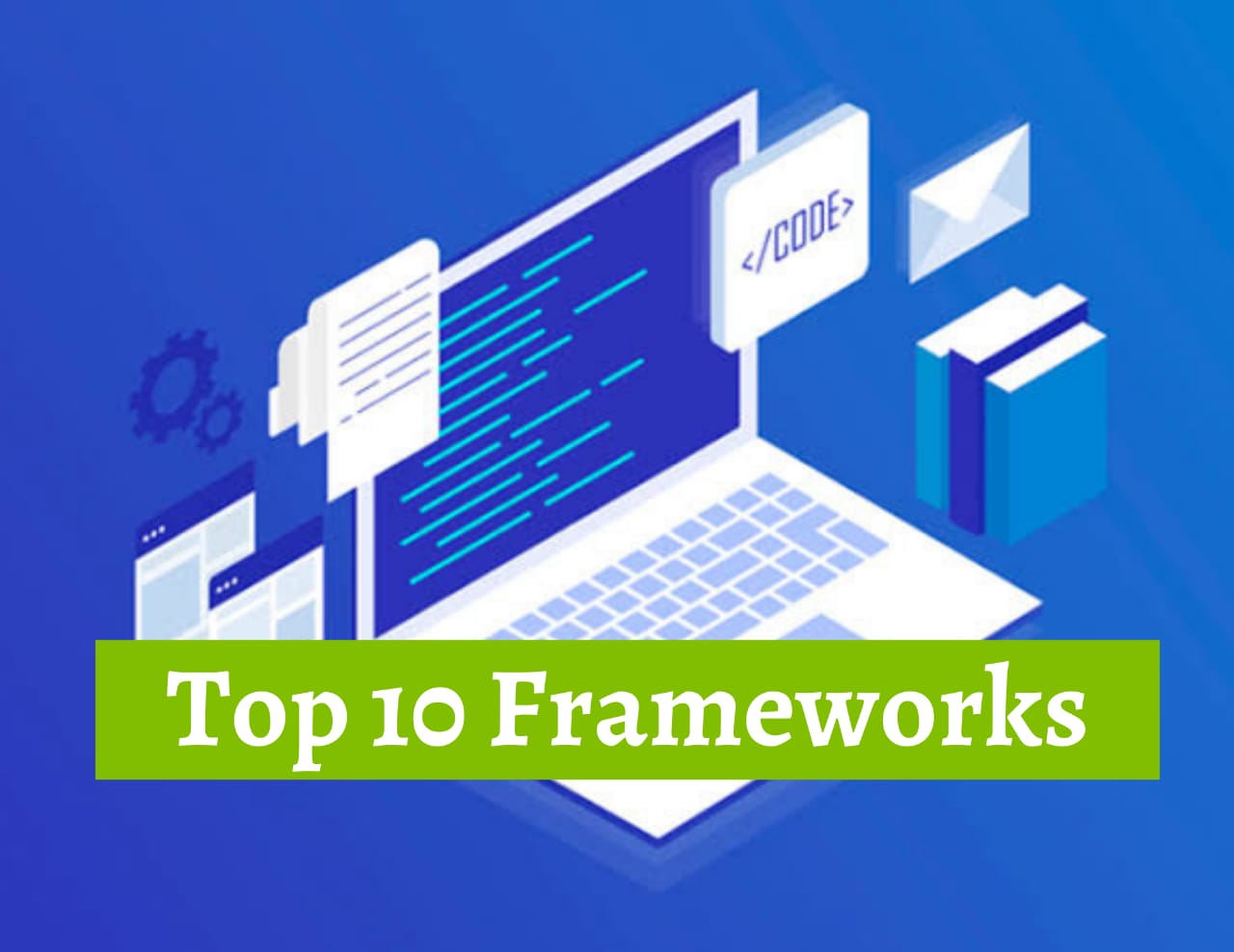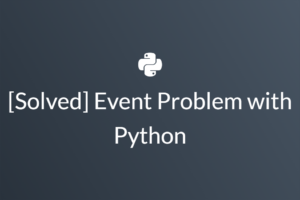Having a website for your business in this digital age has become a must. It opens up the possibility for your enterprise to reach a wider audience base and attract business leads more effectively. Unlike a few years ago, the extensive demand for web application development has led to the inception of several functional frameworks.

This blog is dedicated to 10 such productive frameworks for frontend and backend that are highly prevalent and are known to deliver the best results.
What are Web Frameworks?
- Web Development Framework or simply “web framework” is a software framework that offers a set of tools to support developing web applications including web services, web resources, and web APIs (Application Programming Interfaces).
- Web development framework offers a wide range of prewritten components, code snippets, and entire application templates to ease the work of web developers.
- Frameworks provide standardized development and design conventions that can be applied and modified to fit the needs of your website.
- The purpose of a web development framework is to automate the common tasks performed during the development phase. Frameworks give us a place to start so that we can focus on features rather than configuration details.
Why do we use Frameworks?
The purpose of framework is to allow designers and developers to focus on building an unique feature for their web based projects rather than re-inventing by coding. Framework is specially created to help you boost the performance and efficiency of your web app development task.
Types of Web Development Frameworks?
There are two types or functions of web frameworks:
- Server side (Backend) : Backend frameworks are libraries of server-side programming languages that help build the backend structure of a website. Backend frameworks provide ready-made components for developing a dynamic web application.
- client side (Frontend): Front-end frameworks are JavaScript libraries (with CSS and Bootstrap components) that assist you in creating a website, web app, or mobile app. Front End Frameworks make it much easier for developers to build the user interfaces of their web and mobile apps as web development evolves.
Difference between Front End vs Back End Web Development frameworks ?
| Front End Frameworks | Backend Frameworks |
| The front end is the part of the web app that interacts with the end-user. | The backend of an app refers to the background functioning of the web application. |
| HTML, CSS, JavaScript, JQuery, etc., are a few prevalent front-end languages. | Python, JavaScript, PHP, Ruby, .NET, etc., are a few prominent backend languages. |
| React, Vue, Ember, Bootstrap, and Angular are the most famous front-end frameworks. | Django, Ruby On Rails, Spring, Express, ASP.NET Core are the most famous backend frameworks. |
| It offers pre-written code snippets, integrable elements, reusable templates, and manage user interactions. | It offers features such as user authorization, privacy encryptions, database manipulation, reusable components for connecting the front end to the backend. |
Top 10 Frameworks For Web Development
1. Angular (Frontend)
Angular is a TypeScript-based free and open-source web application framework led by the Angular Team at Google and by a community of individuals and corporations. Angular is a complete rewrite from the same team that built AngularJS.
Advantages :
- Effective Cross-Platform Development.
- High Quality of the Application.
- Improved Speed and Performance.
- Faster Development Process.
- Readable and Testable Code.
Disadvantages :
- Slower processing.
- Steep learning curve.
- The documentation part is not well-organized.
2. Vue.Js (Frontend)
Vue.js is an open-source model–view–viewmodel front end JavaScript framework for building user interfaces and single-page applications. It was created by Evan You, and is maintained by him and the rest of the active core team members.
Advantages :
- Simplicity
- Component-based architecture
- Reusability
- High performance
- Customizable and Incrementally Adoptable.
Disadvantages :
- Limitations in making use of the community;
- Lack of scalability;
- Lack of plugins;
- Lack of highly experienced experts;
- Difficulties with mobile support
3. React (Frontend)
React is a free and open-source front-end JavaScript library for building user interfaces based on UI components. It is maintained by Meta and a community of individual developers and companies.
Advantages :
- Easy to Learn and Use
- Reusable Components.
- Performance Enhancement.
- The Support of Handy Tools.
Disadvantages :
- The high pace of development.
- Poor Documentation.
- JSX as a barrier.
4. jQuery (Frontend)
jQuery is a JavaScript library designed to simplify HTML DOM tree traversal and manipulation, as well as event handling, CSS animation, and Ajax. It is free, open-source software using the permissive MIT License. As of May 2019, jQuery is used by 73% of the 10 million most popular websites.
Advantages :
- jQuery promotes simplicity.
- Easily integrates with the Visual Studio IDE.
- Makes animated applications just like Flash.
- Pages load faster.
- SEO friendly.
Disadvantages :
- huge library to import.
- DOM APIs are now obsolete.
5. Ember (Frontend)
Ember. js is a productive, battle-tested JavaScript framework for building modern web applications. It includes everything you need to build rich UIs that work on any device.
Advantages
- It delivers high performance.
- The documentation is extensive and well-maintained.
- It supports code debugging.
Disadvantages
- The framework has a steep learning curve.
- It is not suitable for smaller projects.
6. Django (Backend+Frontend)
Django is a Python-based web framework, free and open-source, that follows the model–template–views architectural pattern. It is maintained by the Django Software Foundation, an independent organization established in the US as a 501 non-profit.
Advantages
- Better CDN connectivity and Content Management.
- Fast Processing.
- Offers Rapid-development.
Disadvantages
- Not for smaller projects.
- Monolithic framework.
- Multiple request issue.
7. Ruby on Rails (Backend)
Ruby on Rails, or Rails, is a server-side web application framework written in Ruby under the MIT License. Rails is a model–view–controller framework, providing default structures for a database, a web service, and web pages.
Advantages
- Safe & Secure.
- Easy to Maintain.
- Full Stack Framework.
Disadvantages
- Slow processing.
- Improper documentation.
8. Laravel (Backend)
Laravel is a free, open-source PHP web framework, created by Taylor Otwell and intended for the development of web applications following the model–view–controller architectural pattern and based on Symfony.
Advantages
- Good documentation.
- Cache backends.
- Integrated mail services.
- Availability of the newest features of PHP.
Disadvantages
- No support for payment gateways.
- Not suitable for developing mobile apps.
9. Express.JS (Backend)
Express.js, or simply Express, is a back end web application framework for Node.js, released as free and open-source software under the MIT License. It is designed for building web applications and APIs. It has been called the de facto standard server framework for Node.js.
Advantages
- Supported by Google v8 engine.
- Community support.
- Supports Caching.
Disadvantages
- Monotonous callbacks.
- High learning curve.
10. Flask (Backend)
Flask is a micro web framework written in Python. It is classified as a microframework because it does not require particular tools or libraries. It has no database abstraction layer, form validation, or any other components where pre-existing third-party libraries provide common functions.
Advantages
- Higher flexibility.
- Higher compatibility with latest technologies.
- High scalability for simple web applications.
- Technical experimentation.
Disadvantages
- More potential for security risks.
- Slower MVP development in most cases.
- More complex tech stack.
- Higher maintenance costs for more complex systems.
What are the top web development technologies and frameworks for 2022?
Node. js is the most famous web development framework is one of the core building blocks of many other popular frameworks like Angular, React, and many others. Providing essential tools like NPM this JavaScript runtime provides tools to build asynchronous event-driven applications that are scalable.
Is react better or angular?
Angular is better than React if your application is enterprise-grade and you need to incorporate complex functionalities like progressive, single-page, and native web apps. However, React specializes in creating UI components and can be used in any application, including single-page apps.
Which is better Django or laravel?
Django is a little bit faster as it uses the programming language Python, which is faster, whereas Laravel uses PHP, which is a little bit slower. Django has a lot of built-in tools like decorators, SEO tools, third-party libraries etc., whereas Laravel has simpler features and contains method injection.

![[Solved] Find the maximum depth or height of the tree with C](https://realcoder.techss24.com/wp-content/uploads/2022/07/Solved-Find-the-maximum-depth-or-height-of-the-tree-with-C-300x200.png)

